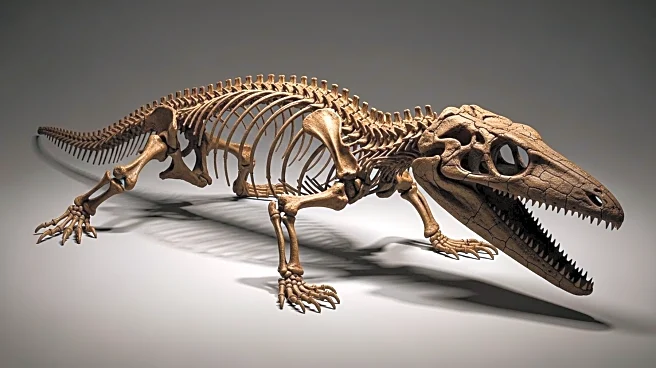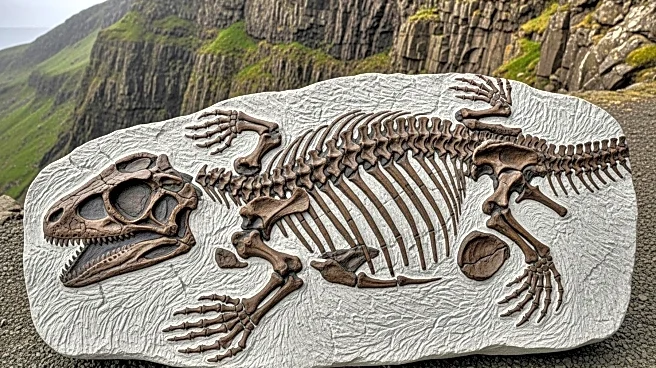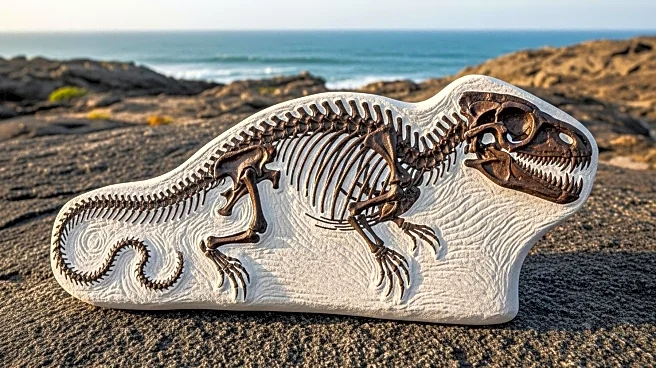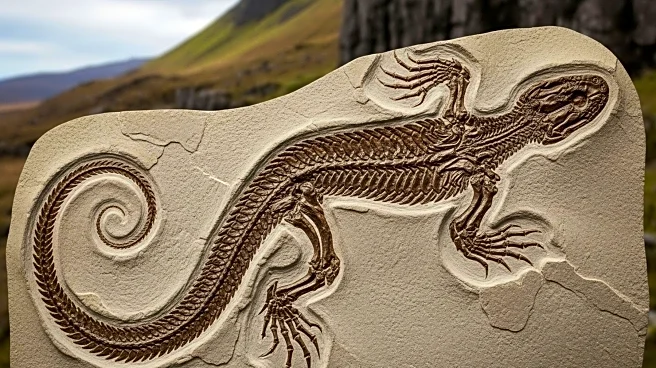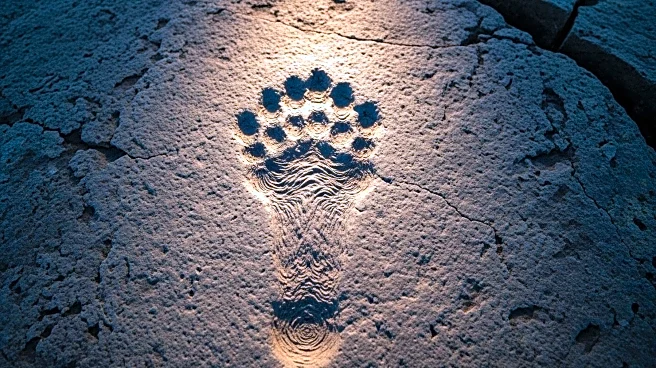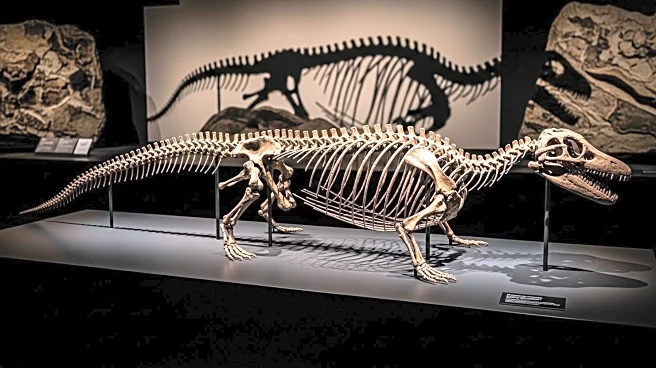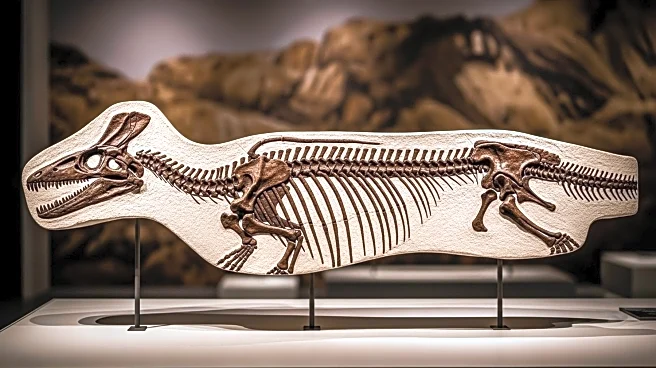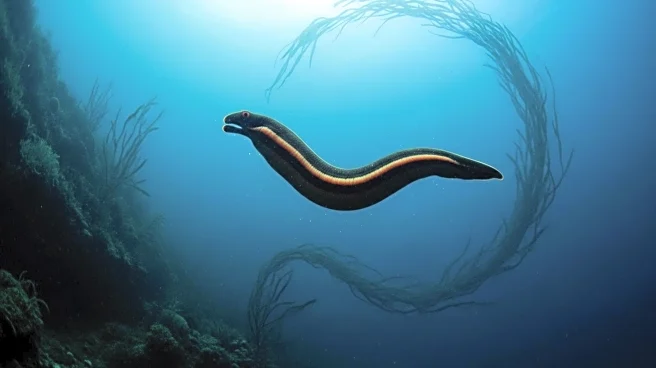What is the story about?
What's Happening?
A multinational team of researchers has discovered a new species of lizard from the Jurassic period, named Breugnathair elgolensis, on the Isle of Skye in Scotland. This species, which lived approximately 167 million years ago, exhibits a unique combination of features seen in both snakes and geckos. The fossil, one of the oldest relatively complete lizard specimens, was studied using advanced imaging techniques. The findings, published in the journal Nature, suggest that Breugnathair had snake-like jaws and teeth similar to modern pythons, yet retained the short body and limbs typical of lizards. This discovery challenges previous assumptions about the evolutionary path of snakes and lizards, indicating that snake-like predatory traits may have evolved independently in this extinct group.
Why It's Important?
The discovery of Breugnathair elgolensis provides significant insights into the evolutionary history of squamates, the group that includes lizards and snakes. By revealing a mix of primitive and specialized features, the fossil suggests that the evolutionary paths of these reptiles were more complex than previously thought. This could reshape scientific understanding of how modern snakes evolved from their lizard-like ancestors. The research highlights the importance of the Isle of Skye's Jurassic fossil deposits in understanding the early evolution of many living groups, potentially influencing future paleontological studies and evolutionary biology.
What's Next?
Further research is needed to conclusively determine the evolutionary position of Breugnathair within the squamate lineage. Scientists may continue to explore other fossil sites for additional evidence that could clarify the evolutionary history of snakes and lizards. The study also opens up new avenues for investigating how certain predatory traits evolved independently in different reptilian lineages, which could lead to a broader understanding of evolutionary processes.
AI Generated Content
Do you find this article useful?
